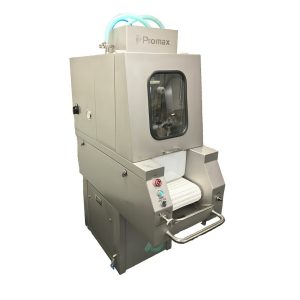In a rapidly evolving world, sustainability has emerged as a paramount concern. As we grapple with the consequences of climate change, it has become imperative to seek innovative solutions that harmonize human activity with the environment. One such innovative approach gaining prominence is the Osea Code. This revolutionary concept is not only transforming the way we construct buildings but also redefining our relationship with nature.
Unraveling the Osea Code
The Osea Code, derived from the Spanish word “Osea” meaning “ocean,” is an architectural and ecological framework that draws inspiration from the natural world, specifically, the complex ecosystems found in our oceans. It combines principles of biomimicry, sustainable design, and cutting-edge technology to create structures that not only minimize their environmental impact but actively contribute to the well-being of the ecosystem they inhabit.
Biomimicry: Nature as the Ultimate Design Guru
At the heart of the Osea Code lies biomimicry – the practice of emulating nature’s time-tested designs, processes, and systems to solve human problems. By studying the intricate relationships and adaptations found in marine ecosystems, architects and engineers are learning valuable lessons in efficiency, resilience, and resourcefulness.
For instance, the streamlined shape of marine organisms like dolphins and sharks has inspired the design of buildings that minimize wind resistance, thus reducing energy consumption. Similarly, the self-cleaning properties of certain fish scales have led to the development of coatings that repel dirt and pollutants, reducing the need for chemical cleaning agents.
Building Symbiotic Relationships with Nature
A key tenet of the Osea Code is the concept of symbiosis – a mutually beneficial relationship between living organisms. In architectural terms, this translates to creating spaces that integrate seamlessly with their natural surroundings. This involves careful consideration of factors like local flora and fauna, microclimates, and geological features.
For example, buildings constructed according to the Osea Code might incorporate green roofs and walls, providing habitats for local wildlife while also improving energy efficiency by regulating temperature and enhancing insulation. Furthermore, utilizing natural materials sourced locally not only reduces transportation emissions but also fosters a deeper connection between the structure and its environment.
The Technological Nexus: Smart Systems and Sustainable Energy
The Osea Code embraces cutting-edge technology to enhance its ecological impact. The integration of smart systems allows buildings to adapt to changing environmental conditions, optimizing energy use and resource allocation. Sensors monitor factors like temperature, humidity, and occupancy, ensuring that resources are deployed efficiently.
Additionally, renewable energy sources form the backbone of Osea Code structures. Solar panels, wind turbines, and geothermal systems are seamlessly integrated, generating clean, sustainable power while minimizing reliance on traditional energy grids. Energy-efficient appliances and lighting further reduce consumption, creating a blueprint for a truly sustainable future.
Resilience in the Face of Adversity
In a world marked by increasing climate volatility, resilience is a critical factor in architectural design. Osea Code structures are engineered to withstand a range of environmental challenges, from extreme weather events to rising sea levels. Elevated foundations and adaptable infrastructure ensure that these buildings can weather the storms, quite literally.
Moreover, Osea Code architects carefully select materials and construction techniques that minimize environmental impact while maximizing durability. This not only reduces the ecological footprint of the building process but also ensures that the structure remains functional and beautiful for generations to come.
Communities and the Osea Code
The Osea Code is not confined to individual buildings; it extends to entire communities. Urban planning according to this code focuses on creating holistic environments that foster connectivity, well-being, and sustainability. Green spaces, communal gardens, and pedestrian-friendly infrastructure form the backbone of Osea Code communities, promoting a sense of belonging and ecological stewardship.
The Future Beckons: Osea Code as a Global Paradigm
As our planet grapples with the urgent need for sustainable solutions, the Osea Code stands as a beacon of hope and innovation. Its principles, grounded in nature’s wisdom, offer a blueprint for a harmonious future where human activity complements, rather than disrupts, the natural world.
From its foundation in biomimicry to its embrace of advanced technology, the Osea Code represents a quantum leap in sustainable architecture. By prioritizing symbiosis, resilience, and community, it not only addresses the ecological challenges of today but also paves the way for a more vibrant, thriving planet for generations to come.
In the Osea Code, we find not just a building philosophy, but a philosophy for life – a call to re-imagine our relationship with the planet and embrace a future where humanity and nature coexist in harmony. It is a testament to our capacity for innovation, a celebration of our connection to the natural world, and a promise to leave a legacy of stewardship for future generations. for blog to visit site dailybsb.



